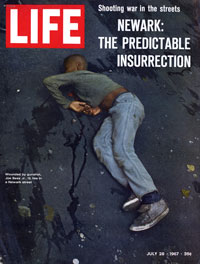Positive images could not by themselves resolve the problem of segregation or racism. While some white Americans supported the movement, many knew little about it, were apolitical, or rejected its goals. As the civil rights movement evolved, its leaders faced a daunting challenge: How best to spur black activism and inspire white people to support the cause of racial equality? Although there was no single answer, it was clear to many that visual images could be decisive in convincing the nation of the severity of the problem of racism and the extent to which it threatened American democracy.
In this regard, photographs and motion pictures were employed to report, document, or offer proof: imagery helped underscore the reality of racism in America, and bring to light little-known events. Leaders of the movement understood the power of visual culture, far more than words alone, to influence public opinion by exposing the ugly, violent, or deadly side of racism and segregation
